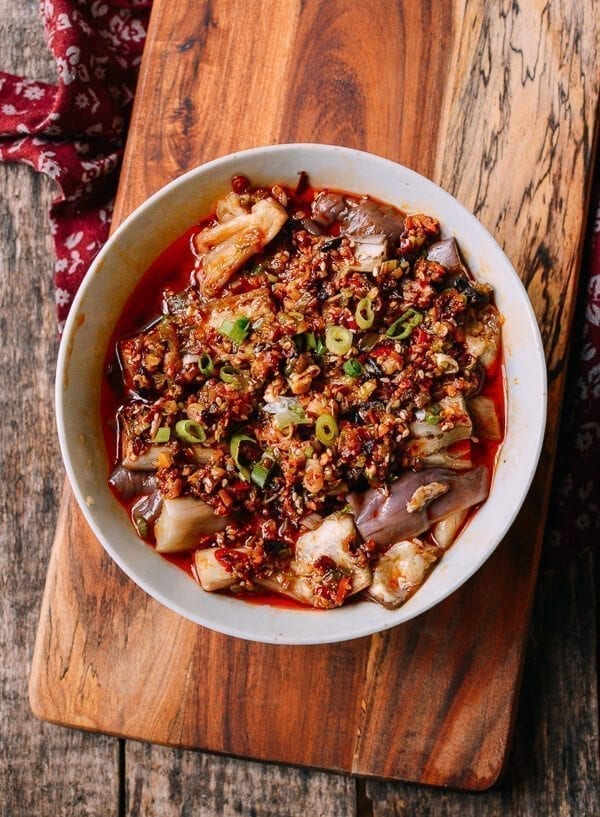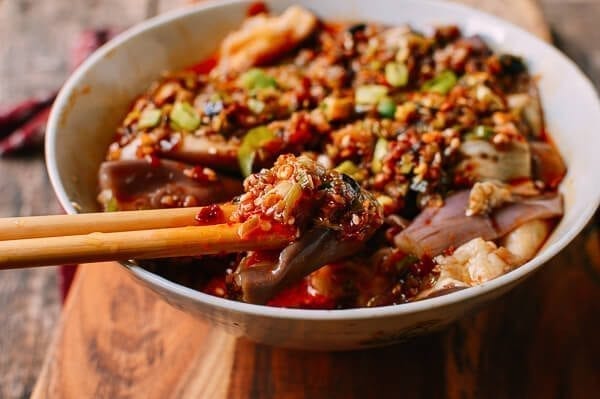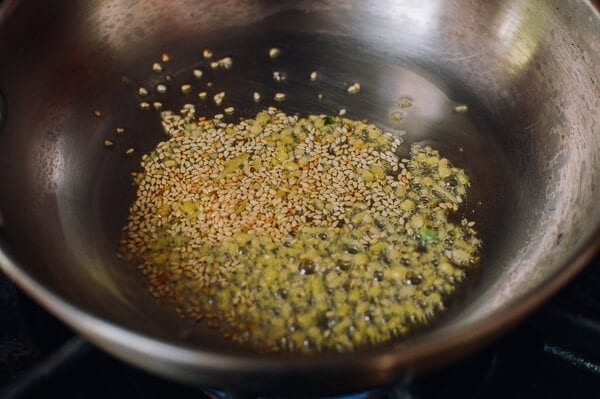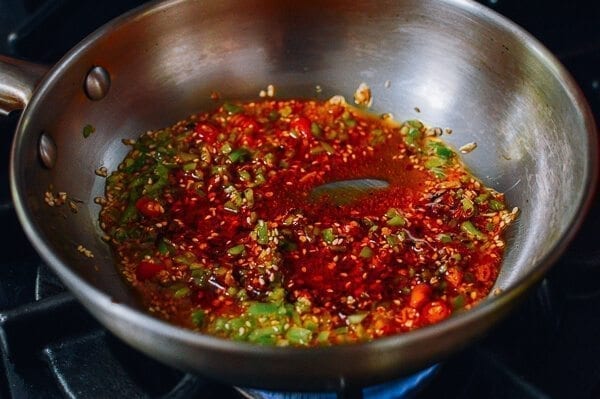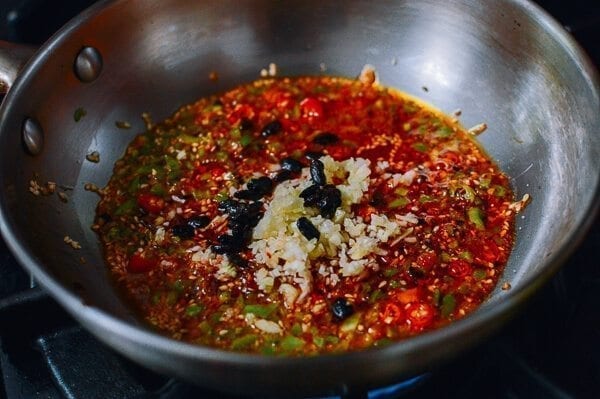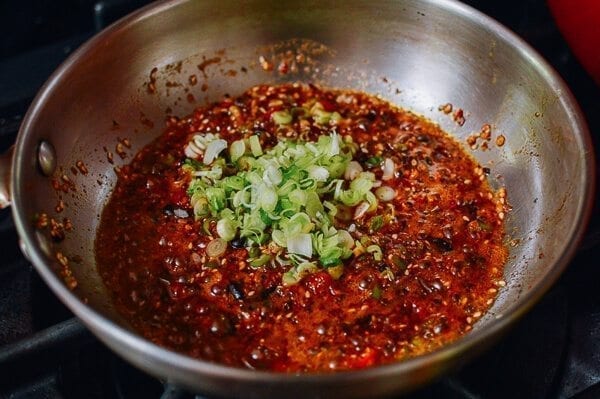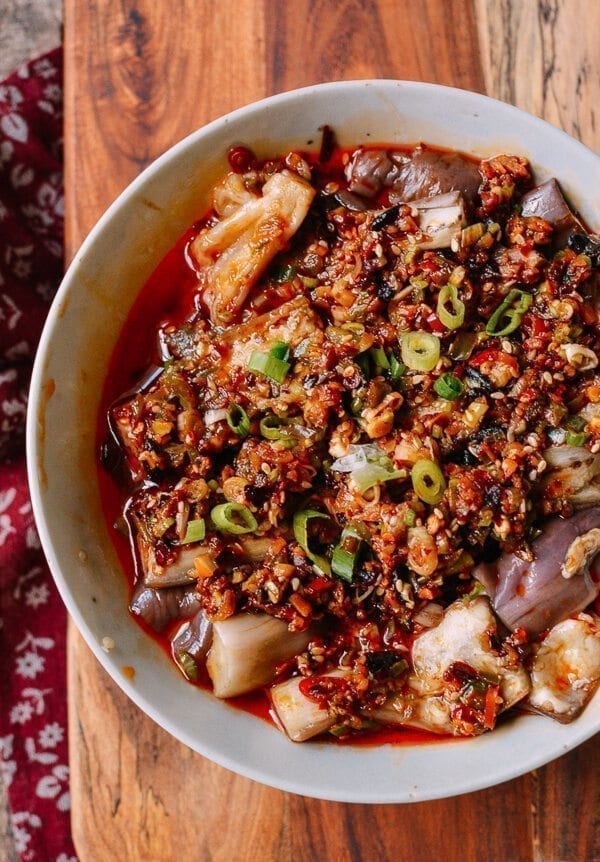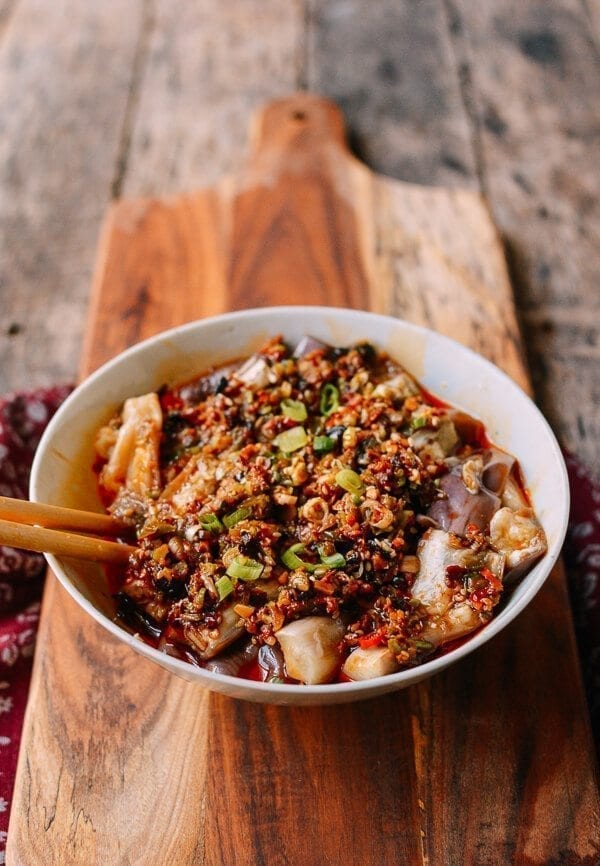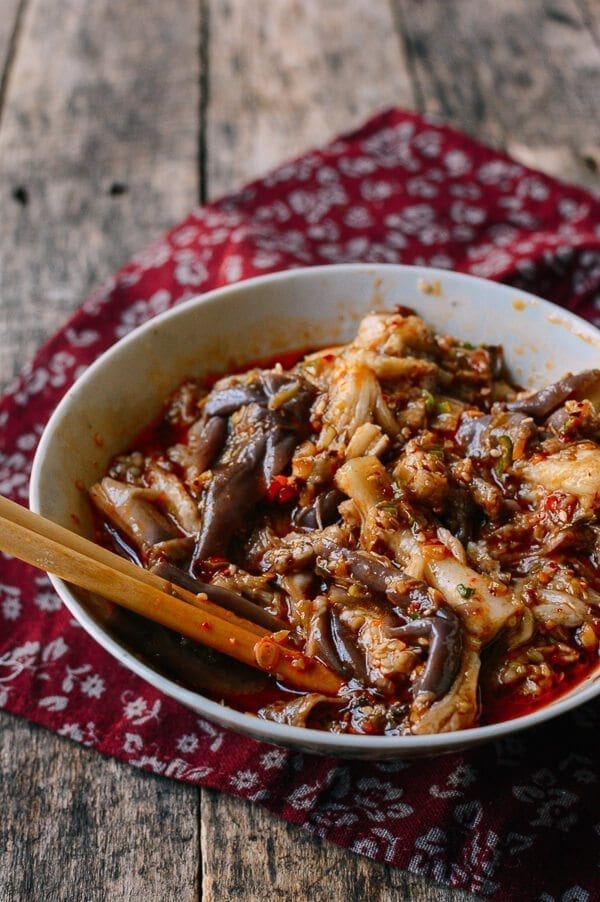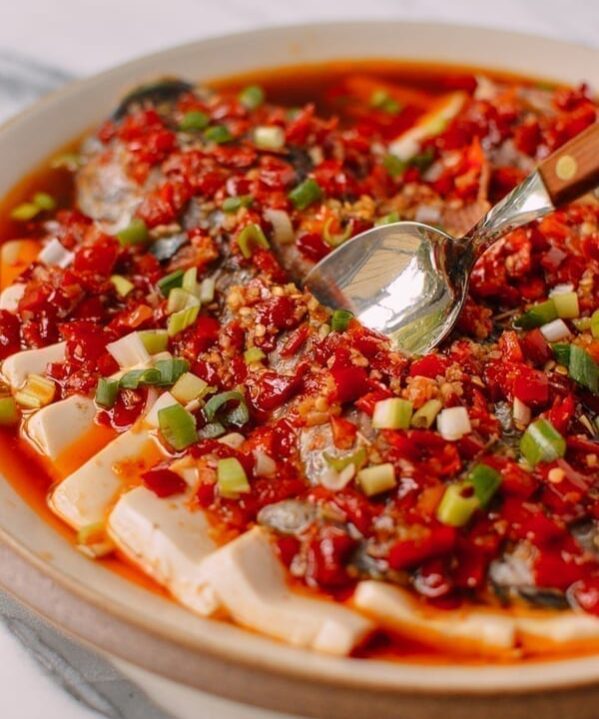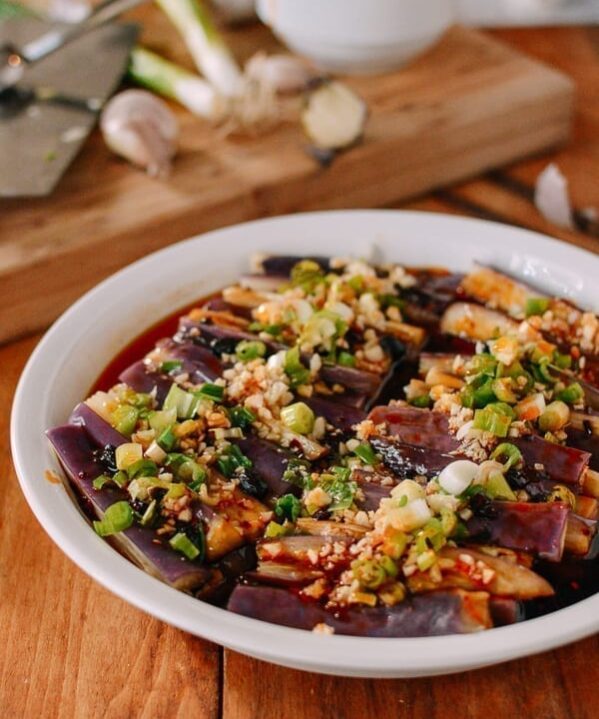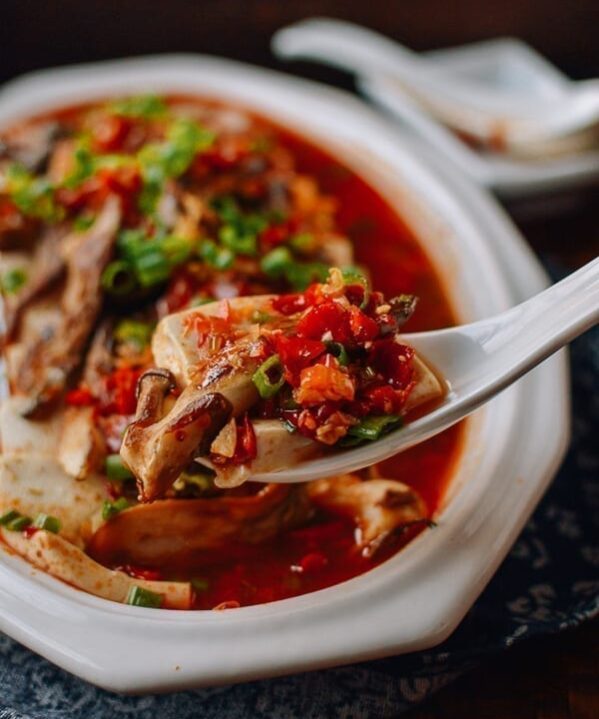If you like eggplant, it can sometimes be tricky to find recipes that go beyond the standard fare. This Hunan Steamed Eggplant is a nice change over the usual, especially if you’re looking for a spicy dish with strong flavors.
Chinese or Japanese purple eggplants are the best choice for this Hunan Steamed Eggplant. They cook up quickly, are tender and soft, and they really soak up that delicious Hunan-style spicy dressing!
What’s more, this Hunan Steamed Eggplant is completely vegetarian/vegan! When testing this recipe, Judy and I enjoyed this steamed eggplant over lots of white rice, and it makes for a pretty satisfying one plate dinner.
One of Our Favorites in China
I remember the first time we had this Hunan Steamed Eggplant. It was in China (bet no one saw that one coming!) at an authentic Hunan restaurant where we also enjoyed Duo Jiao Fish and Stir-Fried Leeks with Preserved Pork. We ordered the eggplant as an appetizer.
It was served warm, and the green peppers and garlic were barely cooked. The raw flavors and aromas really stood out when coupled with the tender Chinese eggplant. Needless to say, we were impressed by the combination.
Unfortunately, we rarely came across this dish in Chinese restaurants locally, until recently, when it popped up on the menu of a new Hunan restaurant we tried in New Jersey–still one of the best places to find unexpectedly authentic Chinese food, if you ask us!
Their version of Hunan Steamed Eggplant was very close to the dish we first tried in China, and I immediately thought to add this dish to our family archives and share it with everyone! It took a few tries to get this steamed eggplant recipe just right, so hope you all enjoy this one!
Hunan Steamed Eggplant: Recipe Instructions
Cut your Japanese eggplants into 3-inch pieces and then cut them into quarters lengthwise. Arrange on a heatproof plate for steaming.
Prepare your wok or large covered pot pan for steaming (or use a metal steamer or dedicated steaming kitchen gadget, if you have one). If you are not familiar with how to steam foods, check out some of our favorite gadgets for steaming on our Chinese cooking tools page.
Better yet, see our post on how to set up a steamer if you’re not familiar with steaming foods in Chinese cooking.
Steam the eggplant for 10 minutes, or until soft. You can serve the eggplant on the same plate, or transfer it to a serving plate. If transferring your steamed eggplant to a serving plate, be sure to include any liquid from the steamed eggplant.
Heat the vegetable oil and toasted sesame oil in a wok or saucepan over medium high heat and add the fresh ginger and sesame seeds.
After 15-20 seconds, stir in the hot chili oil (preferably homemade), sesame paste, soy sauce, salt, and sugar until well combined.
Once the sauce begins to simmer, turn off the heat and stir in the finely chopped long hot green peppers, garlic, half of the scallions, and the fermented black beans. Add the Thai chili only if you like your food super spicy, because they are extra spicy and your dish will already be on the spicy side without them!
Pour the sauce over the eggplant and top with the rest of the scallions.
Serve your Hunan Steamed Eggplant as an appetizer, side dish, or as a full meal alongside steamed rice!
Steamed Eggplant, Hunan Style
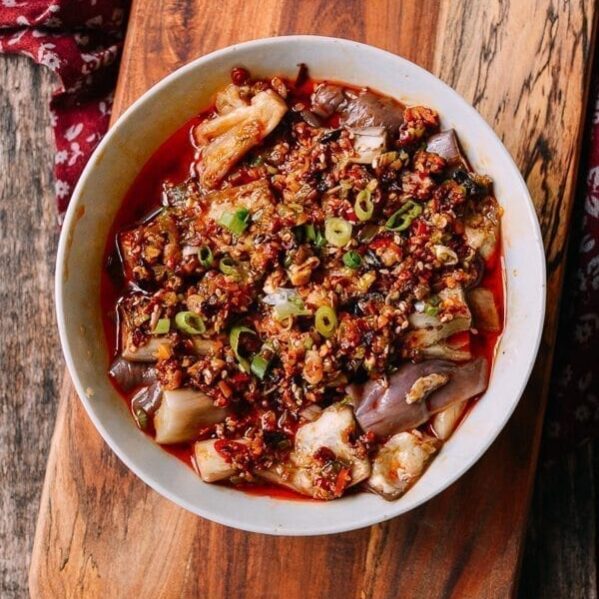
Ingredients
- 2 medium Chinese or Japanese eggplants (12 to 16 ounces)
- 2 tablespoons vegetable oil
- ¼ teaspoon sesame oil
- 1 teaspoon ginger (minced)
- 1/2 teaspoon sesame seeds
- 2 tablespoons chili oil
- 1 tablespoon sesame paste (or tahini)
- 2 teaspoons soy sauce
- ¼ teaspoon salt
- 1 teaspoon sugar
- 1 tablespoon long hot green peppers (finely chopped)
- 3 cloves garlic (minced)
- 1 scallion (finely chopped)
- 1 tablespoon fermented black beans (rinsed and drained)
- 1 small Thai bird chili (chopped, optional)
Instructions
- Cut your Japanese or Chinese eggplants into 3-inch pieces and then cut them into quarters lengthwise. Arrange on a heatproof plate for steaming.
- Prepare your wok or large covered pot pan for steaming (or use a metal steamer or dedicated steaming kitchen gadget, if you have one).
- Steam the eggplant for 10 minutes, or until soft. You can serve the eggplant on the same plate, or transfer it to a serving plate. If transferring your steamed eggplant to a serving plate, be sure to include any liquid from the steamed eggplant.
- Heat the canola and sesame oil in a wok or saucepan over medium high heat and add the fresh ginger and sesame seeds.
- After 15-20 seconds, stir in the hot chili oil, sesame paste, soy sauce, salt, and sugar until well combined.
- Once the sauce begins to simmer, turn off the heat and stir in the finely chopped peppers, garlic, half of the scallions, and the black beans. Add the Thai chili only if you like your food super spicy, because it will already be on the spicy side.
- Pour the sauce over the eggplant and top with the rest of the scallions.
